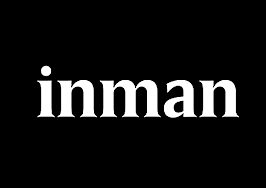We’ve all had to endure pointless meetings, finding ourselves losing valuable time and feeling resentful, knowing that more pressing tasks await. In fact, it has become a contemporary cliché that many a meeting could easily have been replaced by a good memo.
To stimulate your team, achieve your goals and maintain your credibility, the first rule of a great meeting is to decide if it is truly necessary. So, ask yourself these questions:
- Do you just need questions answered or perhaps an update on previously determined action items? If so, pick up the phone, and discuss what you need with the proper individuals.
- Are there difficult or sensitive issues? Meet one on one rather than airing challenging topics in a group setting.
- Is it a recurring meeting with no news or updates? Be considerate of everyone’s time, and cancel it.
Assuming you’ve cleared these hurdles and have determined that the meeting is necessary, consider the following as you move forward.
1. Before the meeting
Determine the purpose and structure of your meeting. This includes identifying your objective, who should attend, how much time you need to cover your agenda, and what preparation is needed to ensure the meeting runs smoothly.
Prepare materials, if necessary. Ensure that the meeting space is comfortable and appropriate accommodations are provided.
Determine the outcomes you seek from the meeting and how to best achieve them. Are you there looking for or relaying information? Do you need to make a decision during or after the meeting, or are you there to lead your team to a decision? Is there any other goal you hope to accomplish?
Communicate your goals in advance. Provide a clear purpose to the meeting by developing a concise agenda and assigning each bullet point to the appropriate team member or participant. Send out the agenda and supporting materials in advance so that the group is properly prepared to listen and contribute.
Set expectations for in-person, video or phone attendance, and clearly communicate the context and framing for the meeting.
2. During the meeting
Start and finish on time — every time. Time is valuable. Assign the task of taking notes to someone who is thorough and concise. Ready for the meeting to start? First things first, answer the question: “Why are we here?”
Managing the discussion is paramount to running the meeting on time and efficiently. If you have requests of participants, set the proper tone by being specific and making the ask early.
If the discussion veers off topic, redirect the conversation while acknowledging and scheduling appropriate attention to other matters, if necessary. If people are talking too long, courteously but firmly set limits for input. If you see attendees disconnecting, be sure to reengage them by acknowledging their interests and mindsets directly.
Stick to the agenda. Set goals, objectives and time frames for each bullet point, and immediately identify action points and accountability. Every participant should leave with a clear purpose and understanding of their takeaways.
Finally, when possible (and it’s always possible!), end early! Your guests or team will appreciate your consideration and will prioritize your future meetings, knowing that you can be trusted with their time.
3. After the meeting
Be sure to follow up with attendees and people who were absent, providing brief, yet thorough, notes that focus on decisions made and action items and their owners.
Assess the meeting according to the goals you set versus what was achieved. What worked? What could be improved? Consider your own strengths and weaknesses as well as those of the participants.
Effective meeting leadership means having a purpose, sticking to your agenda, being courteous of everyone’s time and assigning clear accountability for action items. Combine these characteristics, and become the master of facilitating great meetings.
Chris Pollinger, partner, Berman & Pollinger, LLC is a senior sales and operational executive skilled in strategic leadership, culture building, business planning, sales, marketing, acquisitions, operations, recruiting, and team building.







